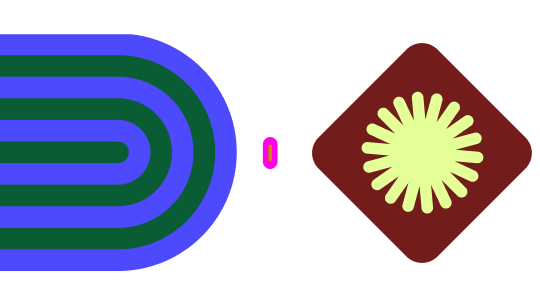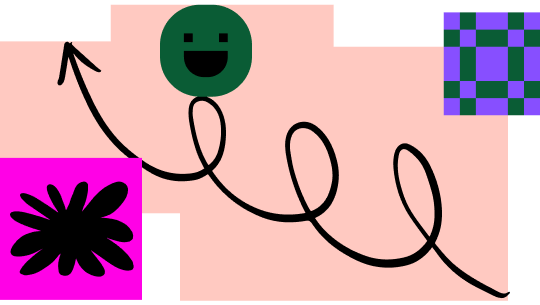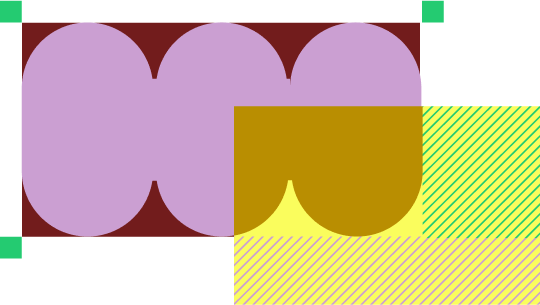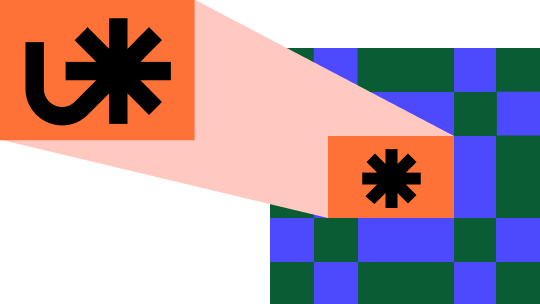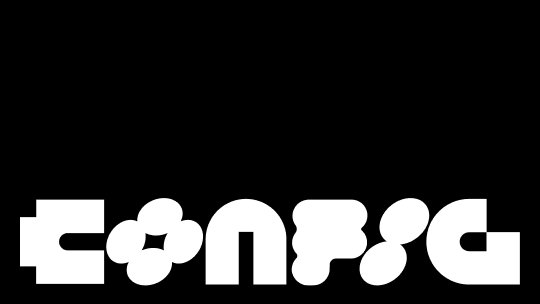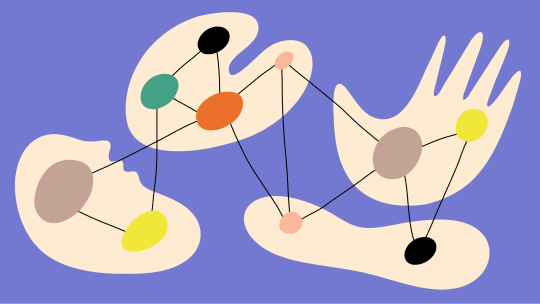How Amplitude streamlines group planning sessions with FigJam
Done well, group planning sessions are highly effective in bringing people together from across departments to solve company-wide problems. But done badly, they can be boring and unfocused – a complete waste of time - and who wants that?
Amplitude, a digital analytics platform, wanted to bring its teams together from across the business and activate them through brainstorming and problem-solving workshops. With the help of FigJam, Figma’s online collaborative whiteboard for teams, Amplitude made its planning workshops both fun and productive.
Watch the full video on YouTube to see how they did it, and find out the key details below!
Planning makes perfect
Amplitude wanted to fix a range of issues around customer experience and business processes and outcomes. The approach they took was to think of planning as a design problem, for which FigJam offered a solution.
“We leaned into design facilitation with FigJam,” explains Jenny Chang, Design Director at Amplitude. So, they brought their teams together via FigJam’s shared online collaborative experience and “activated them” through its features.
FigJam in action
The business ran a workshop event over a number of days, using FigJam for different stages of the process, during which participants gathered physically whilst also collaborating online on their devices.
The whole exercise used a three-stage approach. The first stage is about getting buy in—where the VPs of product, and heads of design, product and ops worked together to determine their shared goals, collaboration areas and timelines, and “align on the why”, Jenny says.
“The main idea was to focus on problems and solutions to drive towards our North Star Metric, the metric we use across teams that represents customer value, leading to business growth,” says Weston Clarke, Principal Product Manager.
FigJam’s collaborative tools really came into their own here, enabling people to focus while staying creative. “Control too much here, and you can really stifle creativity,” says Jenny. On the other hand, not enough control leads to unaligned, unintentional silos and missed potential.
Sharing vision
Having agreed a North Star, the next stage was to use FigJam to visually share the leaders’ vision and values with people from across the business. The design team gathered the rest of the company to walk them through the thinking so far and share the North Star goal.
To achieve this, they ran a Design Tour—printing out giant areas of their initial brainstorming FigJams. Jenny says this enabled people to walk around “tangible artefacts generated from FigJams”—real-life sticky notes and boards.
“What we really wanted to accomplish during this time was to inspire everyone and generate excitement, and teams really wanted to explore big ideas and interface with people that they didn't normally work with,” says Jenny.
Getting down to business
Then, it was time to run the problem-solving workshops themselves, of which there were around ten, to free people up to work out the “how”. They broke people down into teams of four or five, then had them come together afterwards to share their findings with everyone.
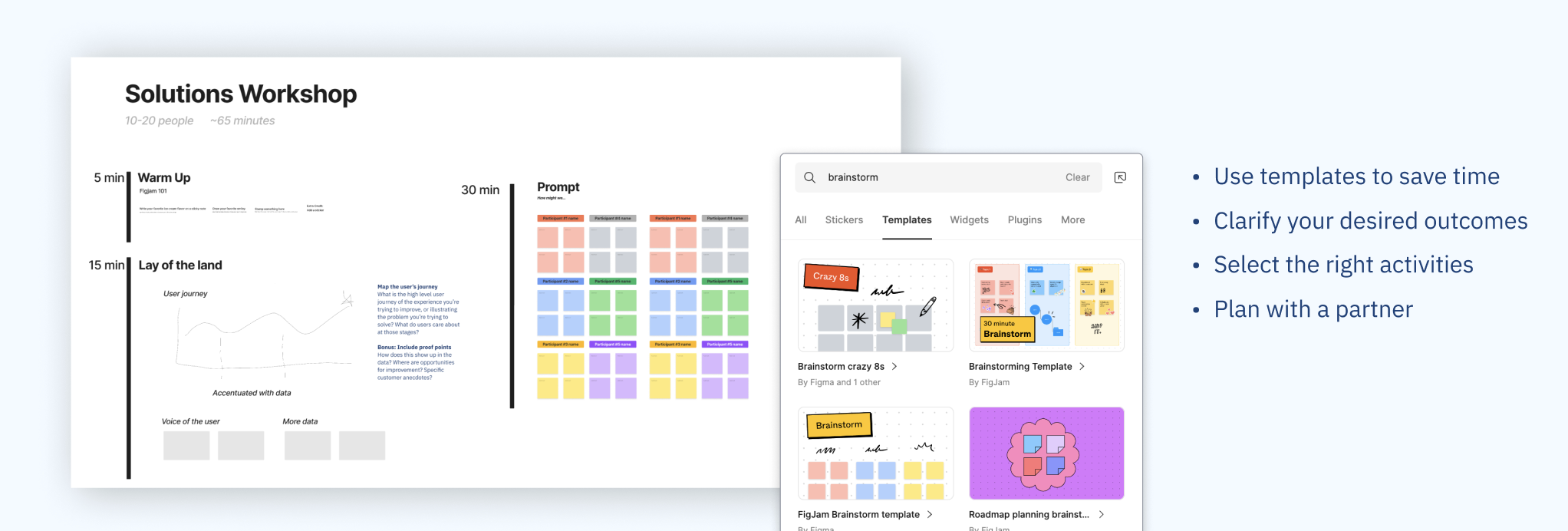
The most popular workshop had over 30 people. This had the goal of “how do we enable customers to create the habit of using the Amplitude platform?” It was a key business conundrum, and essential for the company’s continued success.
This was a session where FigJam’s firepower really helped to get the best results from people. It did this by fostering a sense of freedom and creativity, within defined parameters.
Jenny says, “Only teams can truly understand what they need to be successful. This is the crux of how FigJam helped us.” The teams were given space to solve their own problems using the platform’s full range of tools and features.
The workshops were a major success for Amplitude, which has benefited greatly from the unity, creativity and solutions that FigJam facilitated. And along the way, it developed five Pro Tips to help other FigJam users get the most out of the platform. Here they are.
Amplitude’s FigJam Pro Tips
1. Prepare the workshop
Make your collaborative FigJam board in advance and structure it so it works to a timeframe and has a logical flow to the user journey, says William Newton, Principal Designer at Amplitude.
Save time by using templates; clarify your desired outcomes; select the right activities; and test them out (“play”) with a partner. Work out what could go wrong to help you avoid having to do a live “explain-a-thon”, fix things as you go, or leave participants confused.
2. Make it fun and collaborative
In the warmup before the brainstorming session itself, play some lo-fi beats. Use it to send out “fun meeting” signals so participants relax and prepare to get creative. During collaboration use sticky notes, then add response stickers in the review phase to enable everyone’s voice to be heard.
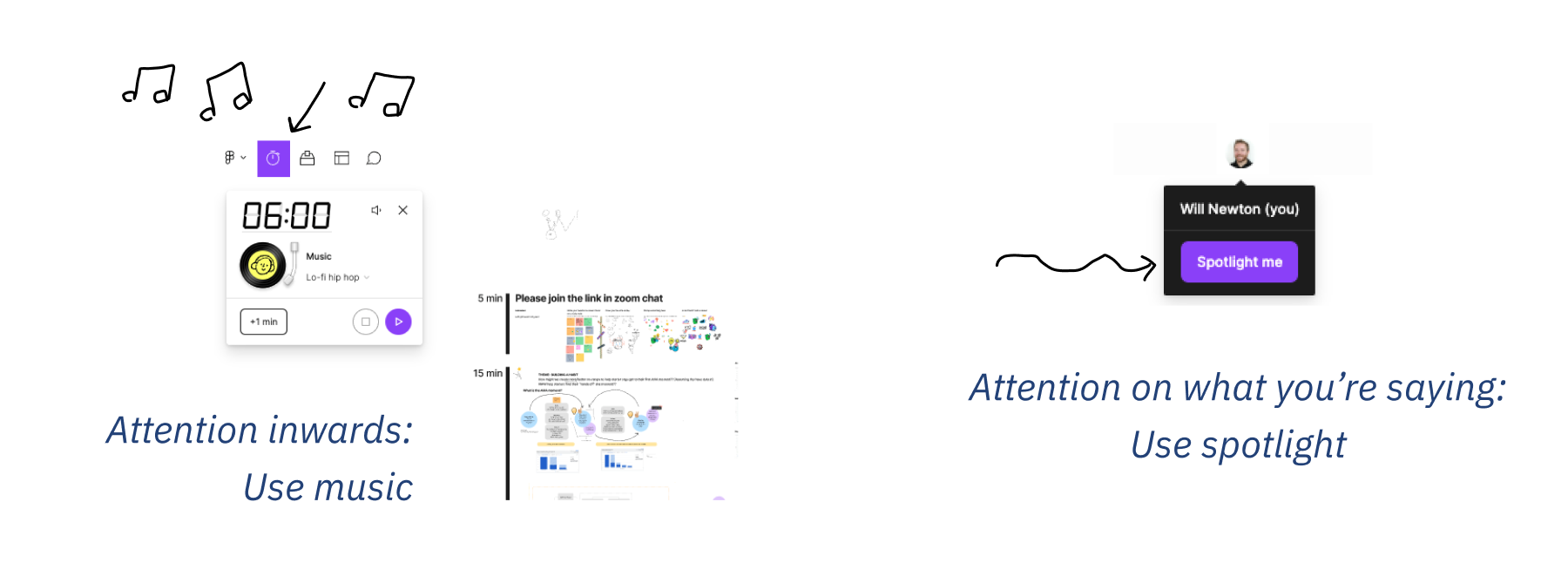
3. Manage the time
“FigJam has a sweet timer feature which I love, and there's music built in which is great,” says William. So, use the timer to keep things moving by time-limiting collaboration on specific boards – say to 10 or 15 minutes. Use the spotlight tool to command attention, teleport everyone in to work together on a specific board, and add a bit of buffer time, which is always needed.
4. Do some synthesis
Once a session is over, visually group themes and prioritise ideas with your leadership team. This will become a draft plan that you can use to discuss, gain feedback, and ask questions. Refine it together. Then spend time preparing the workshop to go again with the next cohort.
5. Follow up and follow through
After the planning workshops are done, follow up and follow through, says William. Immediately after the meeting, take a screenshot of the outcome boards. Send it out, along with image grabs of other notes and boards. Communicate decisions the team has made to avoid people asking: wait-now what?!
Finally, says William, “Thank them for their participation, tell them: this is what we’re going to do next, and this is when you can expect follow-up.”
Shared notes and boards. Low-fi sounds. Warm up games, stickers and timers. With FigJam, meetings are collaborative, fun, and productive, as Amplitude will tell you!
Grab a copy of Amplitude's workshop templates here.
The Total Economic Impact of Figma
This Forrester report shows how teams are using Figma and FigJam to speed up their workflows, consolidate their design stack, and build better products.
See how Figma can help you scale design
Great design has the potential to differentiate your product and brand. But nothing great is made alone. Figma brings product teams together in a fast and more inclusive design workflow.
Get in touch to learn more about how Figma can help companies scale design.
We’ll cover how Figma can help:
- Bring every step of the design process—from ideation, to creation, to building designs—into one place
- Accelerate design workflows with shared company-wide design systems
- Foster inclusivity in the product team process with products that are web-based, accessible, and easy to use
